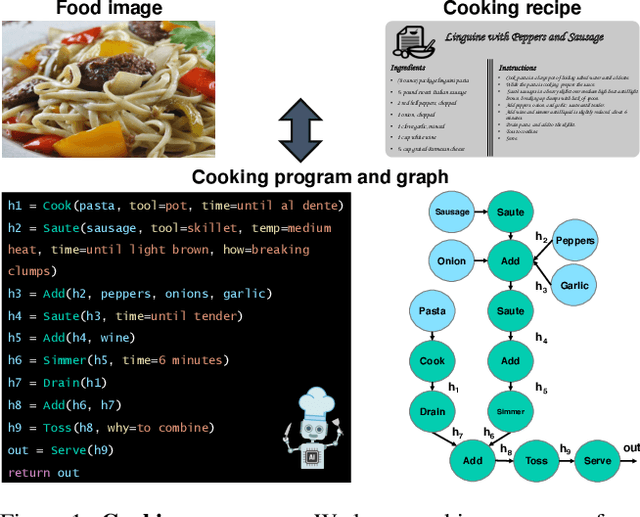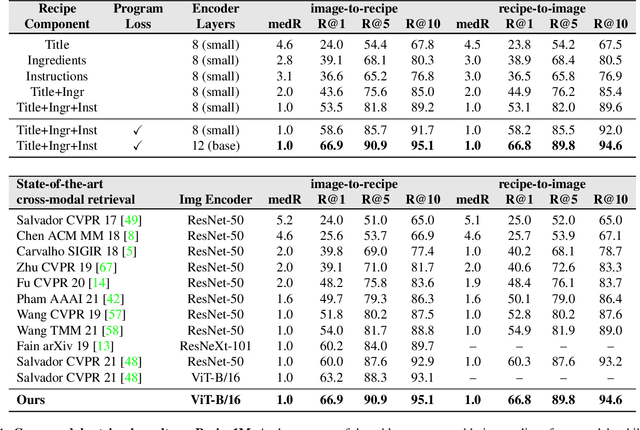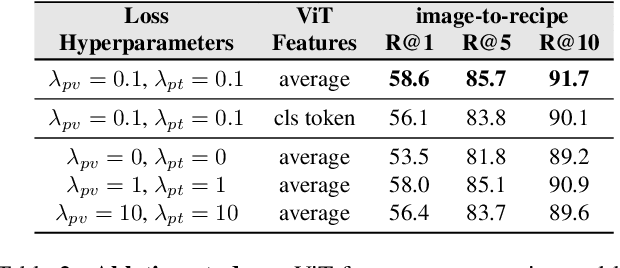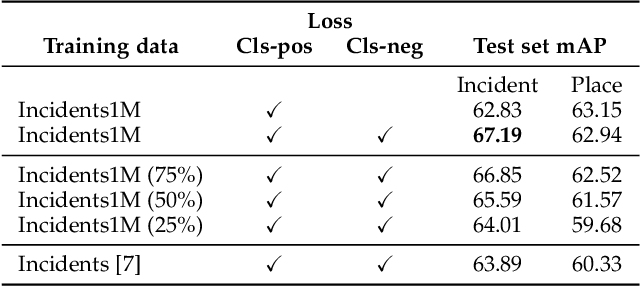Dim P. Papadopoulos
AutoQ-VIS: Improving Unsupervised Video Instance Segmentation via Automatic Quality Assessment
Aug 27, 2025Abstract:Video Instance Segmentation (VIS) faces significant annotation challenges due to its dual requirements of pixel-level masks and temporal consistency labels. While recent unsupervised methods like VideoCutLER eliminate optical flow dependencies through synthetic data, they remain constrained by the synthetic-to-real domain gap. We present AutoQ-VIS, a novel unsupervised framework that bridges this gap through quality-guided self-training. Our approach establishes a closed-loop system between pseudo-label generation and automatic quality assessment, enabling progressive adaptation from synthetic to real videos. Experiments demonstrate state-of-the-art performance with 52.6 $\text{AP}_{50}$ on YouTubeVIS-2019 val set, surpassing the previous state-of-the-art VideoCutLER by 4.4$\%$, while requiring no human annotations. This demonstrates the viability of quality-aware self-training for unsupervised VIS. The source code of our method is available at https://github.com/wcbup/AutoQ-VIS.
Weak Cube R-CNN: Weakly Supervised 3D Detection using only 2D Bounding Boxes
Apr 17, 2025



Abstract:Monocular 3D object detection is an essential task in computer vision, and it has several applications in robotics and virtual reality. However, 3D object detectors are typically trained in a fully supervised way, relying extensively on 3D labeled data, which is labor-intensive and costly to annotate. This work focuses on weakly-supervised 3D detection to reduce data needs using a monocular method that leverages a singlecamera system over expensive LiDAR sensors or multi-camera setups. We propose a general model Weak Cube R-CNN, which can predict objects in 3D at inference time, requiring only 2D box annotations for training by exploiting the relationship between 2D projections of 3D cubes. Our proposed method utilizes pre-trained frozen foundation 2D models to estimate depth and orientation information on a training set. We use these estimated values as pseudo-ground truths during training. We design loss functions that avoid 3D labels by incorporating information from the external models into the loss. In this way, we aim to implicitly transfer knowledge from these large foundation 2D models without having access to 3D bounding box annotations. Experimental results on the SUN RGB-D dataset show increased performance in accuracy compared to an annotation time equalized Cube R-CNN baseline. While not precise for centimetre-level measurements, this method provides a strong foundation for further research.
POEM: Precise Object-level Editing via MLLM control
Apr 10, 2025



Abstract:Diffusion models have significantly improved text-to-image generation, producing high-quality, realistic images from textual descriptions. Beyond generation, object-level image editing remains a challenging problem, requiring precise modifications while preserving visual coherence. Existing text-based instructional editing methods struggle with localized shape and layout transformations, often introducing unintended global changes. Image interaction-based approaches offer better accuracy but require manual human effort to provide precise guidance. To reduce this manual effort while maintaining a high image editing accuracy, in this paper, we propose POEM, a framework for Precise Object-level Editing using Multimodal Large Language Models (MLLMs). POEM leverages MLLMs to analyze instructional prompts and generate precise object masks before and after transformation, enabling fine-grained control without extensive user input. This structured reasoning stage guides the diffusion-based editing process, ensuring accurate object localization and transformation. To evaluate our approach, we introduce VOCEdits, a benchmark dataset based on PASCAL VOC 2012, augmented with instructional edit prompts, ground-truth transformations, and precise object masks. Experimental results show that POEM outperforms existing text-based image editing approaches in precision and reliability while reducing manual effort compared to interaction-based methods.
Studying Image Diffusion Features for Zero-Shot Video Object Segmentation
Apr 07, 2025



Abstract:This paper investigates the use of large-scale diffusion models for Zero-Shot Video Object Segmentation (ZS-VOS) without fine-tuning on video data or training on any image segmentation data. While diffusion models have demonstrated strong visual representations across various tasks, their direct application to ZS-VOS remains underexplored. Our goal is to find the optimal feature extraction process for ZS-VOS by identifying the most suitable time step and layer from which to extract features. We further analyze the affinity of these features and observe a strong correlation with point correspondences. Through extensive experiments on DAVIS-17 and MOSE, we find that diffusion models trained on ImageNet outperform those trained on larger, more diverse datasets for ZS-VOS. Additionally, we highlight the importance of point correspondences in achieving high segmentation accuracy, and we yield state-of-the-art results in ZS-VOS. Finally, our approach performs on par with models trained on expensive image segmentation datasets.
Latent Directions: A Simple Pathway to Bias Mitigation in Generative AI
Jun 10, 2024



Abstract:Mitigating biases in generative AI and, particularly in text-to-image models, is of high importance given their growing implications in society. The biased datasets used for training pose challenges in ensuring the responsible development of these models, and mitigation through hard prompting or embedding alteration, are the most common present solutions. Our work introduces a novel approach to achieve diverse and inclusive synthetic images by learning a direction in the latent space and solely modifying the initial Gaussian noise provided for the diffusion process. Maintaining a neutral prompt and untouched embeddings, this approach successfully adapts to diverse debiasing scenarios, such as geographical biases. Moreover, our work proves it is possible to linearly combine these learned latent directions to introduce new mitigations, and if desired, integrate it with text embedding adjustments. Furthermore, text-to-image models lack transparency for assessing bias in outputs, unless visually inspected. Thus, we provide a tool to empower developers to select their desired concepts to mitigate. The project page with code is available online.
Visual Context-Aware Person Fall Detection
Apr 11, 2024Abstract:As the global population ages, the number of fall-related incidents is on the rise. Effective fall detection systems, specifically in healthcare sector, are crucial to mitigate the risks associated with such events. This study evaluates the role of visual context, including background objects, on the accuracy of fall detection classifiers. We present a segmentation pipeline to semi-automatically separate individuals and objects in images. Well-established models like ResNet-18, EfficientNetV2-S, and Swin-Small are trained and evaluated. During training, pixel-based transformations are applied to segmented objects, and the models are then evaluated on raw images without segmentation. Our findings highlight the significant influence of visual context on fall detection. The application of Gaussian blur to the image background notably improves the performance and generalization capabilities of all models. Background objects such as beds, chairs, or wheelchairs can challenge fall detection systems, leading to false positive alarms. However, we demonstrate that object-specific contextual transformations during training effectively mitigate this challenge. Further analysis using saliency maps supports our observation that visual context is crucial in classification tasks. We create both dataset processing API and segmentation pipeline, available at https://github.com/A-NGJ/image-segmentation-cli.
CrashCar101: Procedural Generation for Damage Assessment
Nov 11, 2023Abstract:In this paper, we are interested in addressing the problem of damage assessment for vehicles, such as cars. This task requires not only detecting the location and the extent of the damage but also identifying the damaged part. To train a computer vision system for the semantic part and damage segmentation in images, we need to manually annotate images with costly pixel annotations for both part categories and damage types. To overcome this need, we propose to use synthetic data to train these models. Synthetic data can provide samples with high variability, pixel-accurate annotations, and arbitrarily large training sets without any human intervention. We propose a procedural generation pipeline that damages 3D car models and we obtain synthetic 2D images of damaged cars paired with pixel-accurate annotations for part and damage categories. To validate our idea, we execute our pipeline and render our CrashCar101 dataset. We run experiments on three real datasets for the tasks of part and damage segmentation. For part segmentation, we show that the segmentation models trained on a combination of real data and our synthetic data outperform all models trained only on real data. For damage segmentation, we show the sim2real transfer ability of CrashCar101.
Learning the What and How of Annotation in Video Object Segmentation
Nov 11, 2023



Abstract:Video Object Segmentation (VOS) is crucial for several applications, from video editing to video data generation. Training a VOS model requires an abundance of manually labeled training videos. The de-facto traditional way of annotating objects requires humans to draw detailed segmentation masks on the target objects at each video frame. This annotation process, however, is tedious and time-consuming. To reduce this annotation cost, in this paper, we propose EVA-VOS, a human-in-the-loop annotation framework for video object segmentation. Unlike the traditional approach, we introduce an agent that predicts iteratively both which frame ("What") to annotate and which annotation type ("How") to use. Then, the annotator annotates only the selected frame that is used to update a VOS module, leading to significant gains in annotation time. We conduct experiments on the MOSE and the DAVIS datasets and we show that: (a) EVA-VOS leads to masks with accuracy close to the human agreement 3.5x faster than the standard way of annotating videos; (b) our frame selection achieves state-of-the-art performance; (c) EVA-VOS yields significant performance gains in terms of annotation time compared to all other methods and baselines.
Learning Program Representations for Food Images and Cooking Recipes
Mar 30, 2022



Abstract:In this paper, we are interested in modeling a how-to instructional procedure, such as a cooking recipe, with a meaningful and rich high-level representation. Specifically, we propose to represent cooking recipes and food images as cooking programs. Programs provide a structured representation of the task, capturing cooking semantics and sequential relationships of actions in the form of a graph. This allows them to be easily manipulated by users and executed by agents. To this end, we build a model that is trained to learn a joint embedding between recipes and food images via self-supervision and jointly generate a program from this embedding as a sequence. To validate our idea, we crowdsource programs for cooking recipes and show that: (a) projecting the image-recipe embeddings into programs leads to better cross-modal retrieval results; (b) generating programs from images leads to better recognition results compared to predicting raw cooking instructions; and (c) we can generate food images by manipulating programs via optimizing the latent code of a GAN. Code, data, and models are available online.
Incidents1M: a large-scale dataset of images with natural disasters, damage, and incidents
Jan 11, 2022



Abstract:Natural disasters, such as floods, tornadoes, or wildfires, are increasingly pervasive as the Earth undergoes global warming. It is difficult to predict when and where an incident will occur, so timely emergency response is critical to saving the lives of those endangered by destructive events. Fortunately, technology can play a role in these situations. Social media posts can be used as a low-latency data source to understand the progression and aftermath of a disaster, yet parsing this data is tedious without automated methods. Prior work has mostly focused on text-based filtering, yet image and video-based filtering remains largely unexplored. In this work, we present the Incidents1M Dataset, a large-scale multi-label dataset which contains 977,088 images, with 43 incident and 49 place categories. We provide details of the dataset construction, statistics and potential biases; introduce and train a model for incident detection; and perform image-filtering experiments on millions of images on Flickr and Twitter. We also present some applications on incident analysis to encourage and enable future work in computer vision for humanitarian aid. Code, data, and models are available at http://incidentsdataset.csail.mit.edu.
 Add to Chrome
Add to Chrome Add to Firefox
Add to Firefox Add to Edge
Add to Edge